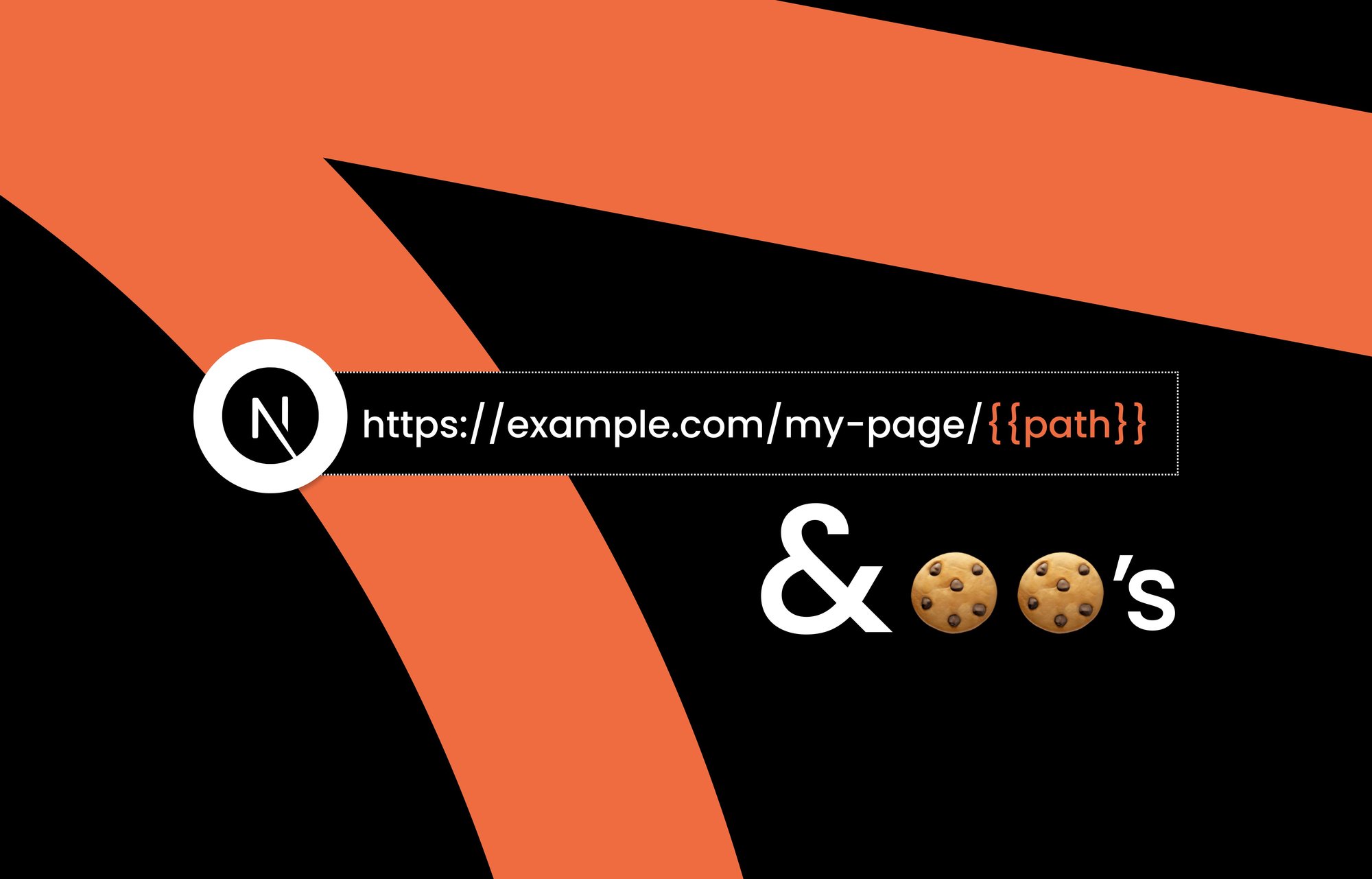Next.js incremental static regeneration is fantastic—it allows for delivering pre-built static pages at scale, rather than rebuilding the entire site on every deployment (cough, cough, Gatsby!). You may scale to millions of static pages while maintaining the advantages of SSG.
Static pages are built in a non-blocking way:
- During build time
- On revalidation hooks calls
- On the first request after the revalidation duration is over
Because of this, developers can't out-of-the-box build pages that depend on the request context. For example, if your page design is different for logged-in users, return visitors, geographical location, etc., you'd have to render those elements on the client...but there is a solution.

With the help of the middleware provided by Next.js, you can write functions that run halfway between the user's request initiation and completion. This way you can process a user's request and rewrite it to a static page if needed.
So in our case, we want to rewrite:
GET http://example.com/my-pageTo:
GET https://example.com/my-page/{{path}}Where path is a deterministic string representation of the various options your static page needs to render accurately.
So, you'd use the middleware to encode things from the request context; such as, geo location, return visitor cookies, and query params. And on the other end you'd have your static path handler decode it.
For example, you could use encodeOptions for whether or not the user is a return visitor, getting their country, and getting the page:
// middleware.js file
import { NextResponse } from 'next/server'
import { encodeOptions } from '../utils';
export default function middleware(request) {
if (request.nextUrl.pathname === '/my-page') {
const searchParams = request.nextUrl.searchParams
const path = encodeOptions({
returnVisitor: Boolean(request.cookies.get('visitor')),
country: request.geo?.country,
page: searchParams.get('page'),
})
return NextResponse.rewrite(new URL(`/my-page/${path}`, request.nextUrl))
}
return NextResponse.next()
}
Then in your static path handler you can decode these options:
// /pages/my-page/[path].jsx file
import { decodeOptions } from '../../utils'
export async function getStaticProps({
params,
}) {
const options = decodeOptions(params.path)
return {
props: {
options,
}
}
}
export function getStaticPaths() {
return {
paths: [],
fallback: true
}
}
export default function MyPath({ options }) {
return <MyPage isReturnVisitor={options.returnVisitor} country={options.country} />
}Now we can implement our encoding/decoding functions, which could be as basic as using JSON.stringify . But we can do better than that—let's use a library that produces deterministic strings from an object:
npm install fast-json-stable-stringify
And use it as in this snippet:
// utils.js
// https://github.com/epoberezkin/fast-json-stable-stringify
import stringify from 'fast-json-stable-stringify'
export function encodeOptions(options) {
const json = stringify(options)
return encodeURI(json);
}
export function decodeOptions(path) {
return JSON.parse(decodeURI(path));
}Combining Next.js middlewares with SSG/ISR pages is super powerful and opens up a variety of use cases, such as:
-
Automatic localization of content based on geographic location, by looking at the
request.geoor theAccept-Languageheaders. -
Changing themes of the site based on the hosting domain, by
looking at the
request.headers.get('host'). - A/B testing variations of the same page.
- Personalizing experiences based on user type.
For more on how our customers use the same technique to deliver high-performing A/B testing and content personalization with Builder.io, check out A/B Testing and Personalization with Next.js Edge Middleware.
Builder.io visually edits code, uses your design system, and sends pull requests.
Builder.io visually edits code, uses your design system, and sends pull requests.




 Connect a Repo
Connect a Repo











